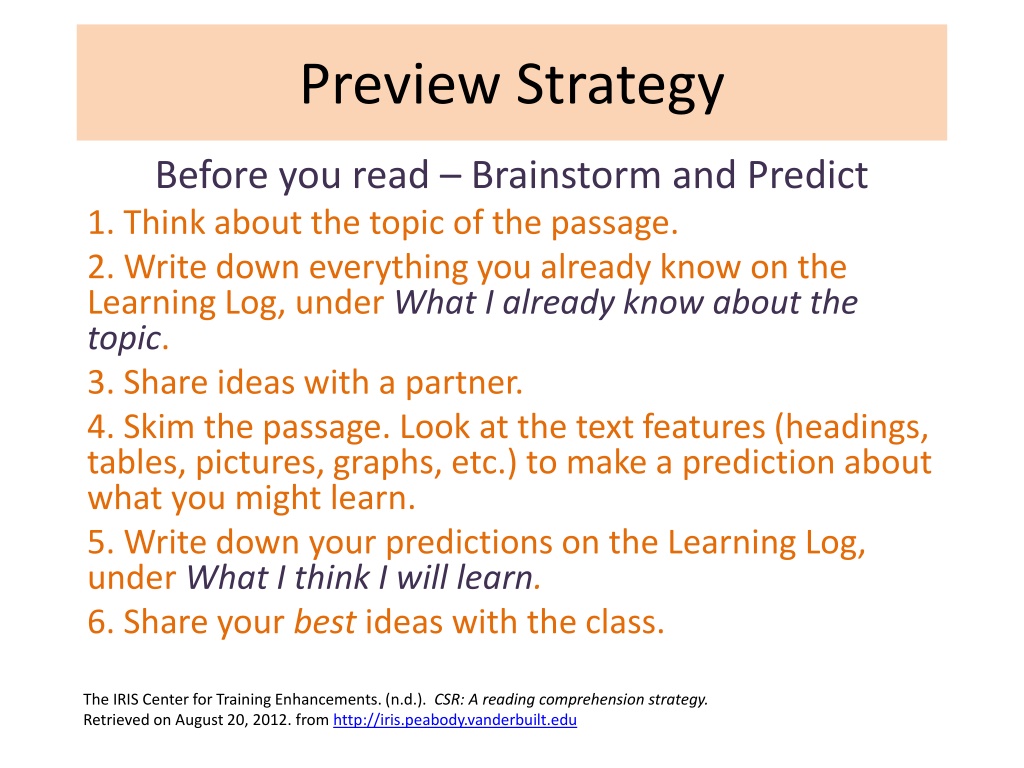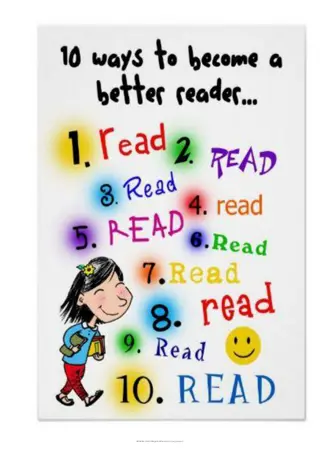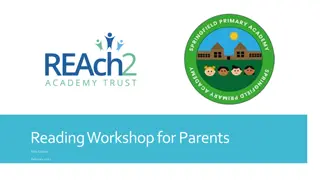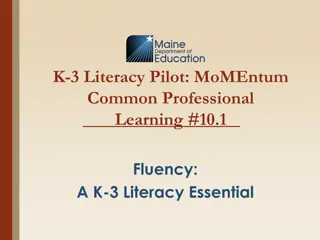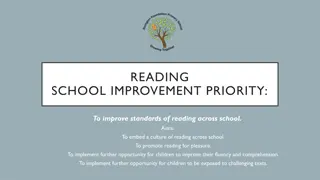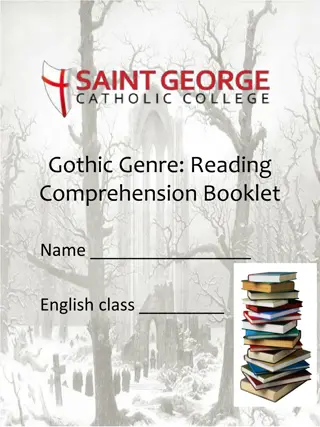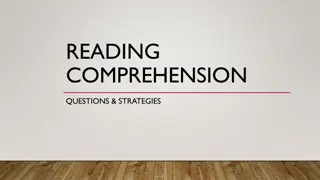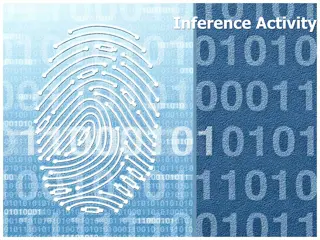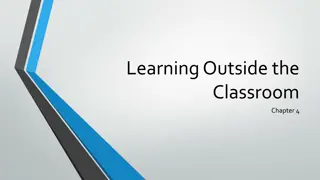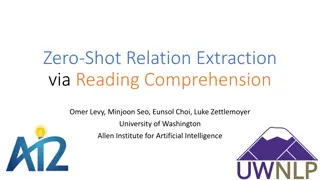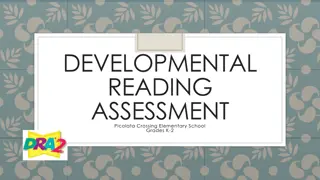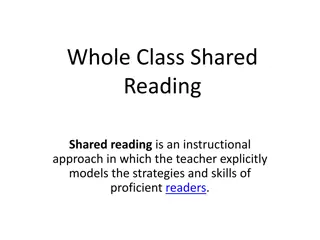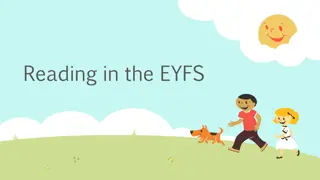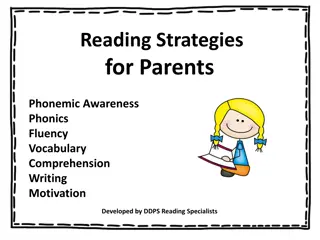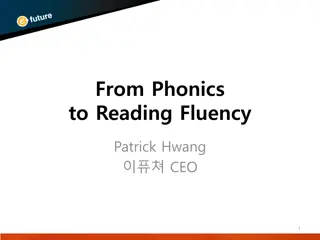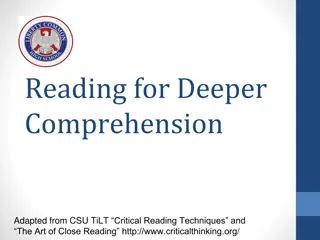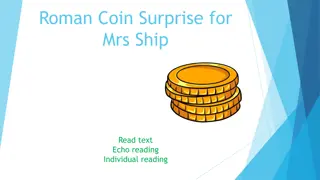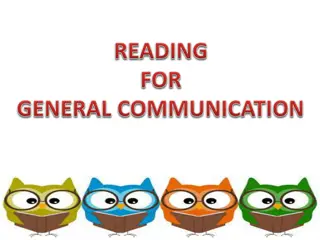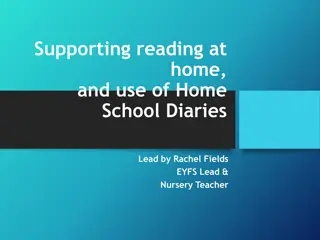Reading Comprehension Strategies for Effective Learning
Discover effective reading comprehension strategies such as the Preview Strategy, Click and Clunk Strategy, Get the Gist Strategy, and Wrap Up Strategy to enhance your understanding of texts. These strategies involve brainstorming, predicting, checking for vocabulary understanding, identifying main ideas, and formulating questions to consolidate learning.
Download Presentation

Please find below an Image/Link to download the presentation.
The content on the website is provided AS IS for your information and personal use only. It may not be sold, licensed, or shared on other websites without obtaining consent from the author.If you encounter any issues during the download, it is possible that the publisher has removed the file from their server.
You are allowed to download the files provided on this website for personal or commercial use, subject to the condition that they are used lawfully. All files are the property of their respective owners.
The content on the website is provided AS IS for your information and personal use only. It may not be sold, licensed, or shared on other websites without obtaining consent from the author.
E N D
Presentation Transcript
Preview Strategy Before you read Brainstorm and Predict 1. Think about the topic of the passage. 2. Write down everything you already know on the Learning Log, under What I already know about the topic. 3. Share ideas with a partner. 4. Skim the passage. Look at the text features (headings, tables, pictures, graphs, etc.) to make a prediction about what you might learn. 5. Write down your predictions on the Learning Log, under What I think I will learn. 6. Share your best ideas with the class. The IRIS Center for Training Enhancements. (n.d.). CSR: A reading comprehension strategy. Retrieved on August 20, 2012. from http://iris.peabody.vanderbuilt.edu
Click and Clunk Strategy As you read check for understanding of vocabulary If you know the word right away it CLICKS in your brain. If you don t know the word and it gets in your way it is a CLUNK When you come across a CLUNK 1. Reread the sentence skipping over the clunk, try to guess another word that might fit (a synonym) in place of the clunk. 2. Reread the clunk sentence AND the sentences before and after it to look for clues to clunk s meaning. (i.e. words or phases that might give you a hint to the clunk. 3. Look for beginning and ending word parts (prefixes and suffixes) in the clunk to help you determine its meaning. 4. Look for words within the clunk. Can you break it into smaller parts or words you do know? 5. Write down any CLUNKS on the Learning Log, under the Section you read the clunk The IRIS Center for Training Enhancements. (n.d.). CSR: A reading comprehension strategy. Retrieved on August 20, 2012. from http://iris.peabody.vanderbuilt.edu
Get the Gist Strategy As you read identify the main idea. Restate the main idea in ten words or less 1. Decide if the section is mainly about a person, place, thing, or idea. 2. Decide which person, place, thing, or idea is being discussed. 3. Look at what is being said about the person, place, thing, or idea in the section you just read. (i.e. what is the basic argument, viewpoint, or angle that the author shares about the topic) 4. Restate the essence of the section in one sentence using 10 words or less. 5. Write down the Gist on the Learning Log, under the Section you just read. The IRIS Center for Training Enhancements. (n.d.). CSR: A reading comprehension strategy. Retrieved on August 20, 2012. from http://iris.peabody.vanderbuilt.edu
Wrap Up Strategy As you read come up with QUESTIONS and REVIEW what you have learned 1. Come up with and answer questions from the passage. a. Brainstorm questions you would ask if you were the teacher? (i.e. what kind of questions do teachers ask in you read) Write down your questions under Questions I will ask on the Learning Log. b. Arrange your questions from the easiest to answer to the most challenging. c. Now try to answer the questions. (If you can t answer the question it may need to be clarified or it might not be question.) 2. Review everything you learned a. Write down the most important ideas from the passage under What I Learned on the Learning Log. b. Share your best ideas with the class discussions after a good The IRIS Center for Training Enhancements. (n.d.). CSR: A reading comprehension strategy. Retrieved on August 20, 2012. from http://iris.peabody.vanderbuilt.edu
